CUBA
Havana

Havana
Havana
Havana (in Spanish: La Habana) is the capital and the main port of Cuba. It is also the commercial centre of the country. Cuba is divided into 15 provinces, Havana, the largest city in Cuba, is one of them. The city/province has 2,135,498 inhabitants according to the 2010 census. It is the largest city in the Caribbean. You can see beautiful fortifications that were built to protect the city from pirates in the 16th century.
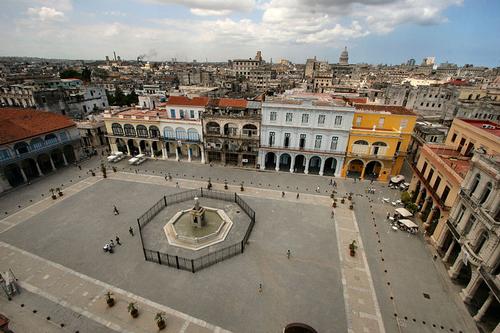 Old HavanaPhoto: Brian Snelson CC 2.0 Generic no changes made
Old HavanaPhoto: Brian Snelson CC 2.0 Generic no changes made
Modern-day Havana consists of three distinct parts: Old Havana, Vedado and the newer suburbs. The city is the seat of the Cuban government, with several ministries, and also has a lot of activity. Old Havana, with its narrow streets and overhanging balconies is not only a residential area, but also the traditional centre of commerce, industry and entertainment. Different styles and fascinating architecture can be found everywhere in Havana. You can see all kinds of buildings from castles from the 16th century to modern contemporary skyscrapers.
Location
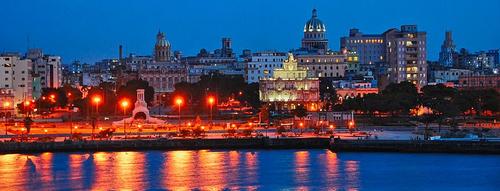 Havana Harbour at nightPhoto: Gabriel Rodríguez CC2.0 Unported no changes made
Havana Harbour at nightPhoto: Gabriel Rodríguez CC2.0 Unported no changes made
The coordinates are: 23°82 North Latitude and 21°51 West Longitude. Havana is located on Cuba's northern coast, south of the Florida Keys, where the Gulf of Mexico meets the Caribbean. The city stretches along the west and south sides of a bay and has three major ports: Marimelena, Guanabacoa and Atarés. The Almendares River crosses the city from south to north and empties into the Florida Strait a few miles west of the bay. Havana lies at an altitude of about 60 metres, with the hills of La Cabaña and El Morro, on which the colonial forts can be found.
Weather
Havana, like the other provinces of Cuba, enjoys a pleasant tropical climate, tempered by the island's position and the warm sea current. Average temperatures range from 22°C in January and February to 28°C in August. The temperature rarely drops below 10°C. Rainfall is plentiful from June to October and slightly less abundant from December to April. The average rainfall is 1,200 mm per year. Hurricanes usually rage along the southern coast of the island. Havana has so far been spared any serious damage.
History
Havana was founded on 25 August 1515 by the Spanish Conquistador Diego Velázquez de Cuellar. The Spaniards named the city San Cristóbal de la Habana. Shortly after the foundation of the first cities in Cuba, the island became a Spanish base for the conquest of other countries on the continent. Hernán Cortes organised his expedition to Mexico from Cuba.
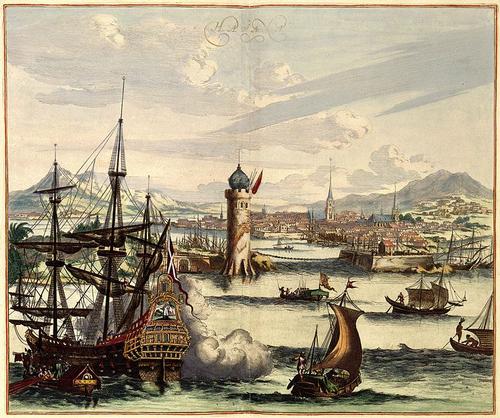 Havana in the 17th CenturyPhoto: Public Domain
Havana in the 17th CenturyPhoto: Public Domain
Havana was originally a trading port, which was regularly attacked by pirates. The attacks forced the Spanish Crown to build fortresses in the major cities. Not only to prevent the pirates and pirates from looting the cities, but also to gain more control over trade with the West Indies. Ships from all parts of the New World transported products to Havana, from where they were shipped to Spain. Hundreds of ships anchored in the bay dominated the cityscape. This gave rise to the development of the city, as the ships had to be supplied with food, water and other products needed for the long journey across the ocean. On 20 December 1592, King Philip II of Spain granted Havana city rights. Later, the city was officially declared "Key to the New World of the West Indies" by the Spanish Crown. In the 16th century, defensive ramparts were built to defend the city. Havana expanded greatly in the 17th century.
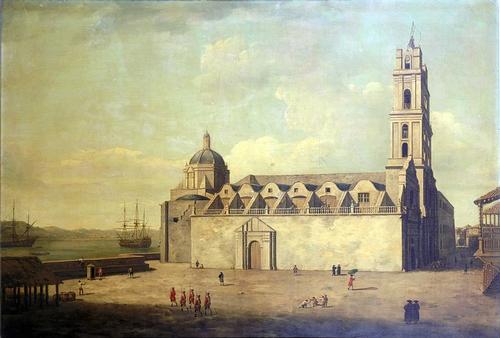 Cathedral of Havana in 1762Photo: Public Domain
Cathedral of Havana in 1762Photo: Public Domain
The city was conquered by the British during the Seven Years' War which ended with the Treaty of Paris. The treaty stipulated that Florida was allocated to Britain in exchange for Havana, which was allocated to Spain on the recommendation of the French. After Havana became Spanish again, the Spanish transformed it into the most fortified city in the Americas. The Fort of San Carlos de la Cabaña, the largest Spanish fort built in the New World. In the early 19th century, trade between the Caribbean and the North American states increased. Havana became a thriving and fashionable city. In 1863, the city walls were demolished to allow for further expansion. At the end of the 19th century, Havana witnessed the end of Spanish colonialism in South America.
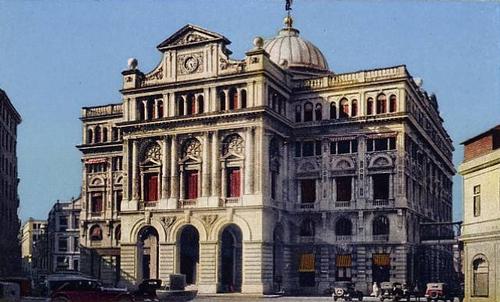 Havana Stock Exchange building from 1920Photo: Public domain
Havana Stock Exchange building from 1920Photo: Public domain
In the 20th century, during the Republican period of 1902-1959, Havana experienced a new phase of development and progress. Cuba recovered from the ravages of war and became a wealthy country and Havana was known as the" Paris of the Caribbean". Numerous luxury hotels, casinos and nightclubs were built during the 1930s to cater for the growing tourist industry.
After the revolution of 1959, led by Fidel Castro, the rigid communist system was adopted on the model of the Soviet Union. The new regime expropriated all private property and businesses. The situation in the whole country deteriorated. The American embargo that followed hit Havana particularly hard. After many years of isolation, the communist government turned to tourism to increase its financial income and allowed foreign investors to build new hotels and develop the tourism sector.
Sights
Some of Havana's sights are described below.
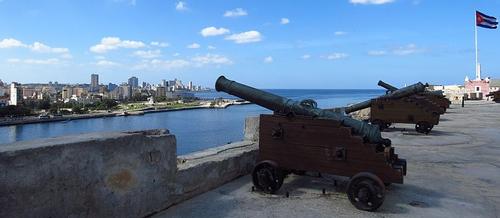 Fortress of San Carlos de la Cabaña in HavanaPhoto: Bananaplug CC 4.0 International no changes made
Fortress of San Carlos de la Cabaña in HavanaPhoto: Bananaplug CC 4.0 International no changes made
The Fortaleza San Carlos de la Cabaña is a fort on the eastern side of Havana Bay. La Cabaña is the most impressive fortress of the colonial era. Its walls, built at the end of the 18th century, are very special.
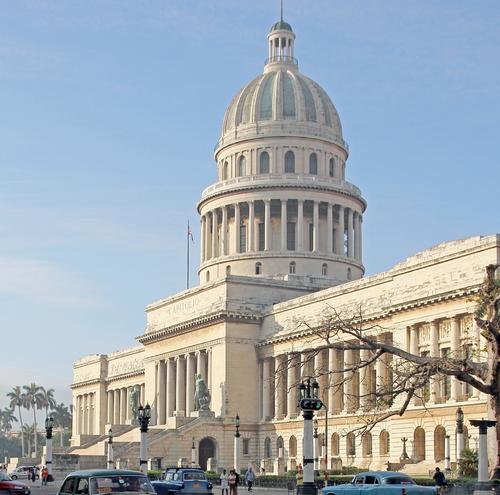 El Capitolio National HavanaPhoto: Gerry Zambonini CC 2.0 Generic no changes made
El Capitolio National HavanaPhoto: Gerry Zambonini CC 2.0 Generic no changes made
El Capitolio Nacional was built in 1929 as both the Senate and the House of Representatives. This grandiose building with a dome dominating the skyline can be seen from all over the city. The Statue of the Republic stands in this building, it is the fourth largest covered statue in the world. The Cuban Academy of Sciences and the Museo Nacional de Historia Natural are also located in El Capitolio Nacional. The museum contains the largest natural history collection in the country.
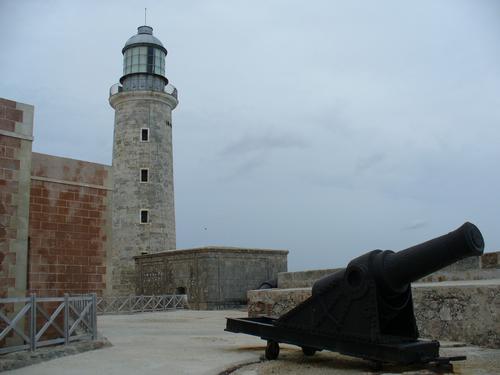 Castillo de los Tres Reyes del Morro HavanaPhoto: Leandro Neumann Ciuffo CC 2.0 Generic no changes made
Castillo de los Tres Reyes del Morro HavanaPhoto: Leandro Neumann Ciuffo CC 2.0 Generic no changes made
The Castillo de los Tres Reyes Magos del Morro is a picturesque fortress that guards the entrance to Havana Bay. In the 18th century, political prisoners were imprisoned here. Today, it is a museum whose subjects include piracy. Every night at 9pm, a cannon sounds from the fort to signal that the port is closed.
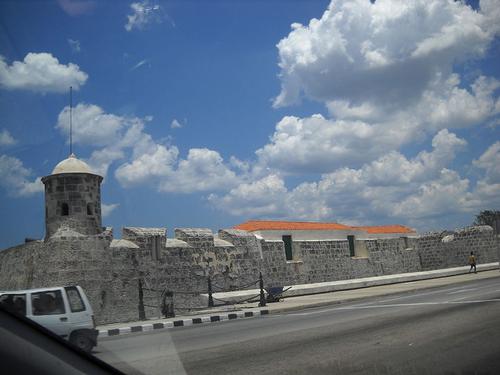 Castillo San Salvador de la Punta HavanaPhoto: Callelinea in the public domain
Castillo San Salvador de la Punta HavanaPhoto: Callelinea in the public domain
The Castillo San Salvador de la Punta is a small fortress built in the 16th century at the western gateway to Havana's harbour, where ancient and antique weapons are displayed.
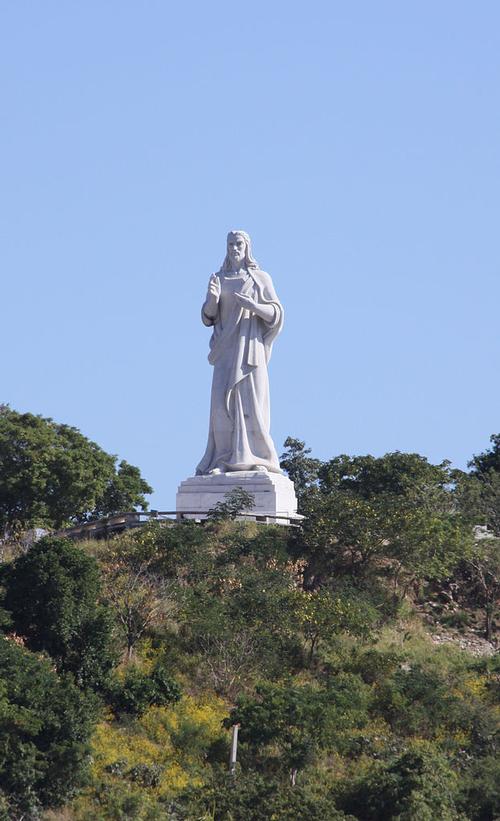 Cristo de la HabanaPhoto: Tony Hisgett CC 2.0 Generic no changes made
Cristo de la HabanaPhoto: Tony Hisgett CC 2.0 Generic no changes made
The Cristo de La Habana is a 20-metre high marble statue of Christ on the eastern slope of the bay.
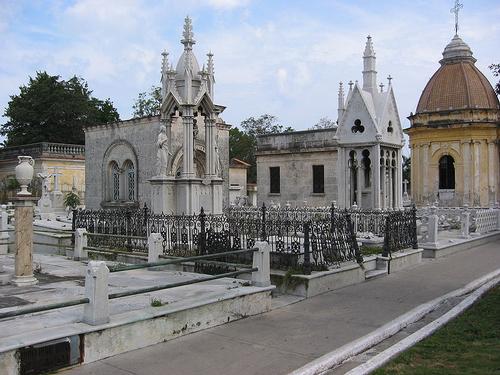 Necropolis Cristóbal Colón HavanaPhoto: Darwininan CC 3.0 Unported no changes made
Necropolis Cristóbal Colón HavanaPhoto: Darwininan CC 3.0 Unported no changes made
The Necropolis Cristóbal Colón is a cemetery and open-air museum. It is one of the most famous cemeteries in Latin America, known for its splendour. The cemetery was built in 1876 and has almost a million graves. It is a beautiful park and a good alternative to the other parks in Havana.
The central park is a real oasis in the city. It provides an important place to escape the traffic and noise of the city. The park was laid out in the 19th century and grew to its current size in the second half of the 19th century, after the city walls were knocked down. The central park is located in Old Havana and is the city's main park, where people picnic a lot. The park is located on the western edge of the historic district and is a great place for people-watching.
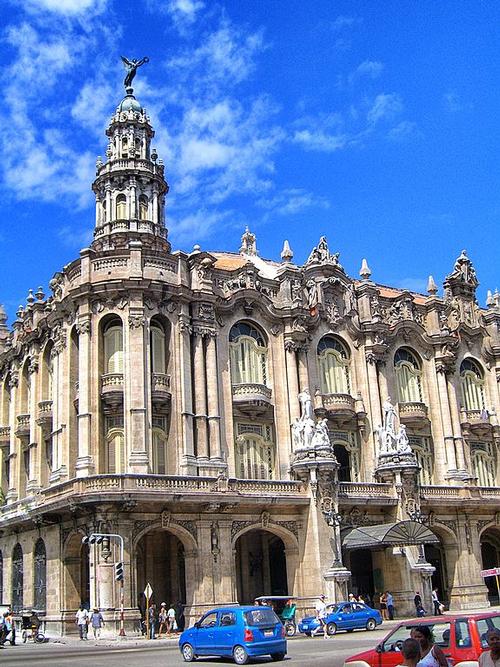 Grand Theatre of HavanaPhoto: Pablo Trincado CC 2.0 Generic no changes made
Grand Theatre of HavanaPhoto: Pablo Trincado CC 2.0 Generic no changes made
Facing Havana's central park is the Baroque Grand Theatre of Havana, a prominent theatre built in 1837. It is now home to the National Ballet of Cuba and the Havana International Ballet Festival, one of the oldest ballet festivals in the New World.
Tips
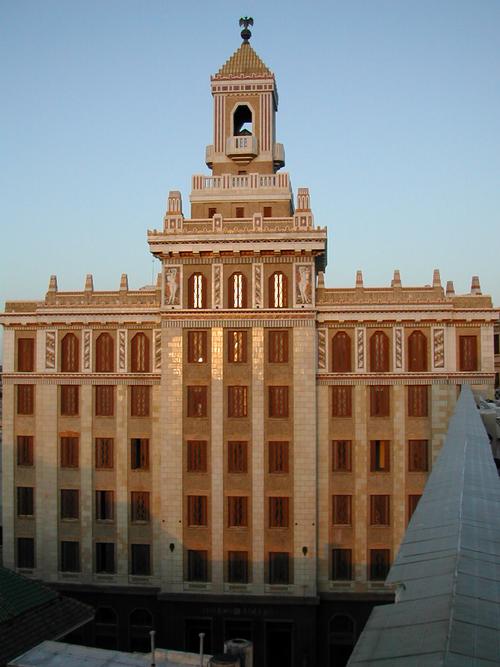 Edificio Bacardi art-deco architecture in HavanaPhoto: James Emery CC 2.0 Unported no changes made
Edificio Bacardi art-deco architecture in HavanaPhoto: James Emery CC 2.0 Unported no changes made
Havana is a very attractive city in terms of its architecture thanks to its more than five hundred years of existence. Its long history can be seen in the city's beautiful architecture from different historical periods. Neoclassism was introduced to the city in the 1840s. During the first decades of the 20th century, Havana expanded faster than at any time in its history. The city acquired great wealth and became important as a tourist destination, introducing new architectural styles influenced by foreign countries. The peak of neoclassicism came with the construction of the Vedado district. In 1927, the Art Deco style was applied in Havana with the construction of the Miramar housing estate. The Edificio Bacardi (1930) is the best example of Art Deco architecture and the first major Art Deco building in the city, followed by the Hotel Nacional de Cuba (1930) and the Lopez Serrano building, built in 1932. In the 1950s, large office buildings and flat blocks were built, which dramatically changed the city's skyline.
Useful links Havana
BBC Country ProfilesWorld Fact Book Explore all Countries
How to call
Last updated November 2025
Copyright: Team - The World of Info